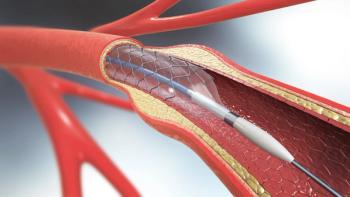
ADHD Prescriptions Rise Among Reproductive-Age Women
More research needed to determine if ADHD medication is safe to take before and during pregnancy.
As more reproductive-age women fill prescriptions for medication to treat attention-deficit/hyperactivity disorder (ADHD), medical professionals and patients need to better understand the risks associated with taking it while pregnant, according to a press release from the CDC.1
Between 2003 and 2015, the CDC found that ADHD prescriptions among women between the ages of 15 and 44 has increased by 344%.
The boom in prescriptions was even greater among women in their late 20s and early 30s. The amount of women aged 25 to 29 years who had filled a prescription for ADHD medication increased by 700% from 2003, while this rate increased 560% among women aged 30 to 34 years.
Due to the medications prevalence among reproductive-age women, both patients and their health care providers must understand how ADHD treatments can impact fetal development, even in the early weeks of pregnancy, according to the release.
“Early pregnancy is a critical time for the developing baby. We need to better understand the safest ways to treat ADHD before and during pregnancy,” said Colleen Boyle, PhD, MSHyg, director of the CDC National Center on Birth Defects and Developmental Disabilities.
Currently, there is a lack of information regarding the effect ADHD medication may have during pregnancy, highlighting the need for more research to determine whether it is safe.
The CDC noted that in some cases, women may be prescribed the medication before they realize they are pregnant.
“Half of all pregnancies in the United States are unplanned, and women may be taking prescription medicine early in pregnancy before they know they are pregnant,” Dr Boyle said.
According to the study, women of all age groups, in all geographic regions, between the ages of 15 and 44 increased their use of ADHD medication from 2003 to 2015. These women were all privately insured and had prescription drug coverage.2
The study evaluated the increase between age groups of 5-year increments; all age groups increased, with women aged 25 to 29 years having the most significant increase, according to the study.
Overall, the number of women filling prescriptions for ADHD medication increased from .09% of women to 4% of women, with the most common prescriptions being amphetamine salts (Adderall), lisdexamfetamine (Vyvanse), and methylphenidate (Ritalin).
The CDC’s National Center on Birth Defects and Developmental Disabilities is now working to better understand the risks of taking ADHD medication before and during pregnancy through their initiative Treating for Two: Safer Medication Use in Pregnancy.
“If a woman is pregnant or thinking about becoming pregnant, she should talk to her healthcare provider about all medicines she is taking. Pregnant women should also talk to their doctor before stopping or starting any medicine,” Dr Boyle concluded.
References
1. Dramatic increase in ADHD prescriptions filled by reproductive-age women [news release]. CDC's website. https://www.cdc.gov/media/releases/2018/p0118-ADHD-prescriptions-increasing.html. Accessed January 29, 2018.
2. Anderson KN, Ailes EC, Danielson M, et al. Attention-Deficit/Hyperactivity Disorder Medication Prescription Claims Among Privately Insured Women Aged 15—44 Years — United States, 2003–2015. MMWR. 2018. 67(2);66-70.
Newsletter
Stay informed on drug updates, treatment guidelines, and pharmacy practice trends—subscribe to Pharmacy Times for weekly clinical insights.






































































































































































































